Association of step counts over time with the risk of chronic disease in the All of Us Research Program
- PMID: 36216933
- PMCID: PMC9671804
- DOI: 10.1038/s41591-022-02012-w
Association of step counts over time with the risk of chronic disease in the All of Us Research Program
Erratum in
-
Author Correction: Association of step counts over time with the risk of chronic disease in the All of Us Research Program.Nat Med. 2023 Dec;29(12):3270. doi: 10.1038/s41591-023-02313-8. Nat Med. 2023. PMID: 37046000 Free PMC article. No abstract available.
Abstract
The association between physical activity and human disease has not been examined using commercial devices linked to electronic health records. Using the electronic health records data from the All of Us Research Program, we show that step count volumes as captured by participants' own Fitbit devices were associated with risk of chronic disease across the entire human phenome. Of the 6,042 participants included in the study, 73% were female, 84% were white and 71% had a college degree, and participants had a median age of 56.7 (interquartile range 41.5-67.6) years and body mass index of 28.1 (24.3-32.9) kg m-2. Participants walked a median of 7,731.3 (5,866.8-9,826.8) steps per day over the median activity monitoring period of 4.0 (2.2-5.6) years with a total of 5.9 million person-days of monitoring. The relationship between steps per day and incident disease was inverse and linear for obesity (n = 368), sleep apnea (n = 348), gastroesophageal reflux disease (n = 432) and major depressive disorder (n = 467), with values above 8,200 daily steps associated with protection from incident disease. The relationships with incident diabetes (n = 156) and hypertension (n = 482) were nonlinear with no further risk reduction above 8,000-9,000 steps. Although validation in a more diverse sample is needed, these findings provide a real-world evidence-base for clinical guidance regarding activity levels that are necessary to reduce disease risk.
© 2022. The Author(s).
Conflict of interest statement
The authors declare no competing interests. The sponsor,
Figures

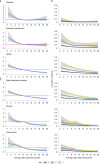
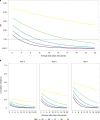


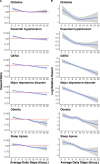

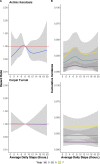
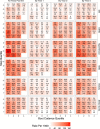
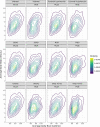
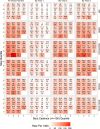
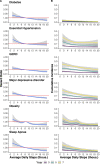
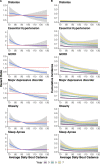
Comment in
-
Reducing chronic disease may just be a walk in the park.Cell Rep Med. 2022 Dec 20;3(12):100874. doi: 10.1016/j.xcrm.2022.100874. Cell Rep Med. 2022. PMID: 36543094 Free PMC article.
References
Publication types
MeSH terms
Grants and funding
- OT2 OD026556/OD/NIH HHS/United States
- U2C OD023196/OD/NIH HHS/United States
- OT2 OD025315/OD/NIH HHS/United States
- OT2 OD026551/OD/NIH HHS/United States
- U24 OD023121/OD/NIH HHS/United States
- OT2 OD026552/OD/NIH HHS/United States
- OT2 OD025337/OD/NIH HHS/United States
- R01 HL146588/HL/NHLBI NIH HHS/United States
- OT2 OD025277/OD/NIH HHS/United States
- OT2 OD026555/OD/NIH HHS/United States
- OT2 OD026550/OD/NIH HHS/United States
- OT2 OD026553/OD/NIH HHS/United States
- OT2 OD023205/OD/NIH HHS/United States
- OT2 OD025276/OD/NIH HHS/United States
- OT2 OD026557/OD/NIH HHS/United States
- OT2 OD026554/OD/NIH HHS/United States
- U24 OD023163/OD/NIH HHS/United States
- OT2 OD023206/OD/NIH HHS/United States
- U24 OD023176/OD/NIH HHS/United States
- OT2 OD026548/OD/NIH HHS/United States
- OT2 OD026549/OD/NIH HHS/United States
- R61 HL158941/HL/NHLBI NIH HHS/United States
LinkOut - more resources
Full Text Sources

